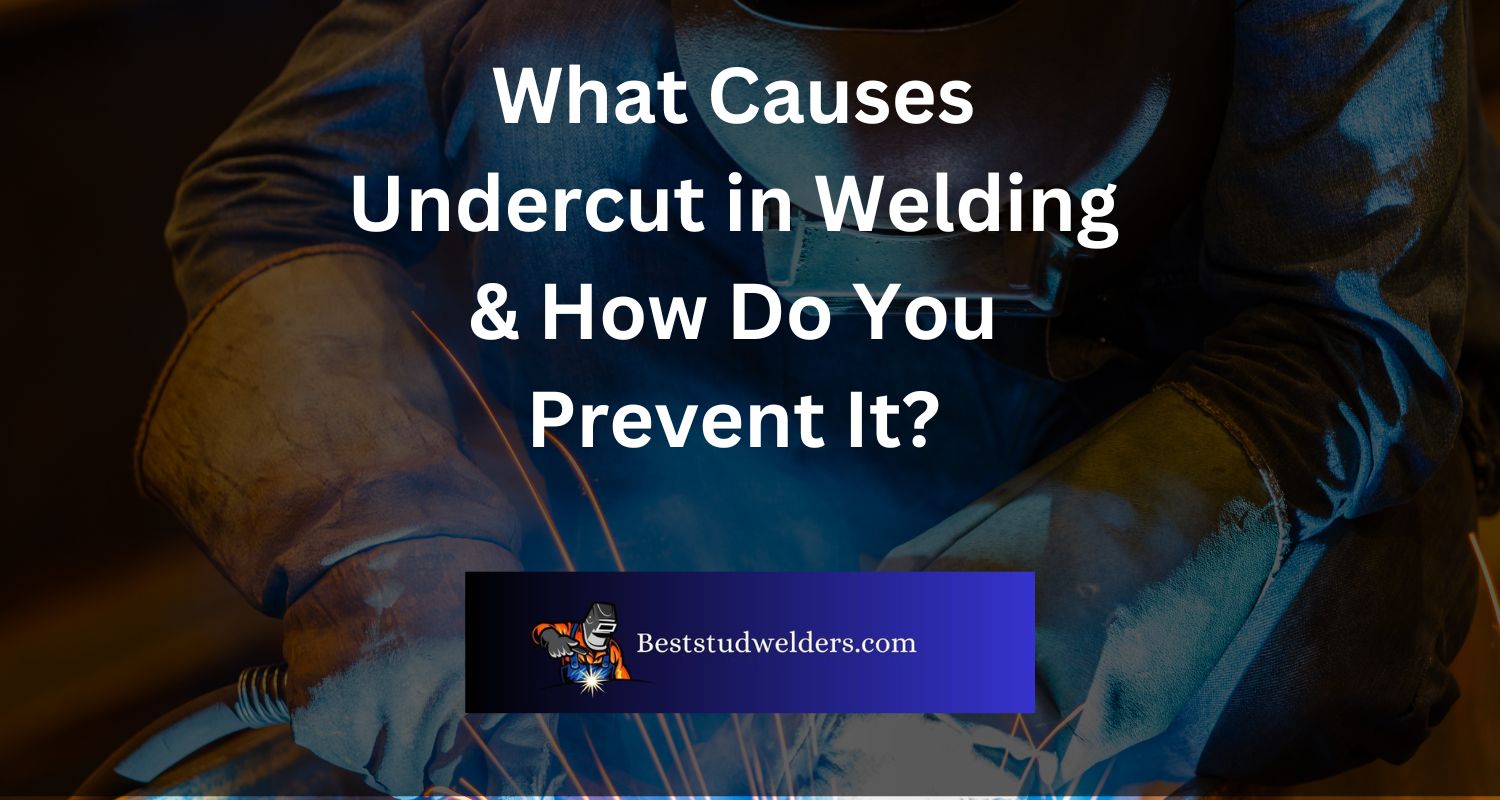Undercut in welding is a common mistake among welders, but that doesn’t mean it’s something you should just accept.
In order to understand what causes undercut and how to prevent it from occurring, we need to first get an understanding of what undercut actually is.
Put simply, undercut happens when excessive melting of the base material creates cavities or grooves underneath the surface of a welded joint.
This not only weakens the joint itself but can lead to a higher incidence of cracking and other problems down the line so it’s important for any welder to be able to identify and address this issue before it becomes an even larger problem!
In today’s blog post, let’s dive into more details regarding what causes undercutting in welding joints as well as possible preventative measures you can take while welding.
What is undercutting in welding?
Undercutting in welding is like a bad haircut – it ruins the whole job. To avert this, it’s essential to control heat input, electrode angle, and travel speed when welding. Plus, keeping the weld bead size small and avoiding too much weaving reduces heat and distortion. For best quality, undercutting must be minimized or eliminated.
Examining the base material’s mechanical properties and choosing the right filler metal is key. Preparing the surface by removing all contaminants, like rust or grease, is also important. Automated systems monitor heat input during welding to lower human error chances.
It is vital to consider how to prevent undercutting for optimal welding jobs. Neglecting this leads to weak joint strength, eventual structural damage, and safety risks. Professional welders must consult technical experts and study the best solutions before embarking on industrial projects.
Causes of undercutting in welding
Undercutting in welding can be a huge frustration. Causes include excessive current and incorrect electrode position. To prevent it, maintain a steady angle between the electrode and workpiece. Prep the workpiece surface before welding, and lower current/travel speed. Fillet welding around corners and shortening the arc can help too. Expertise in recognizing issues is key.
A welder was having issues with undercutting. He realized it was due to improper electrode positioning. He improved his technique by paying closer attention to electrode placement. This resulted in fewer undercutting incidents and satisfied customers.
.jpg)
Effects of undercutting in welding
Undercutting in welding is a groove formation on the base metal or welded joint surface. This can cause weak joints, corrosion, porosity and cracked welds. To avoid undercutting, several steps should be taken:
- Manage heat input and avoid overheating.
- Position and angle the electrode correctly.
- Choose an appropriate filler metal.
Improving training programs, following codes & standards, and regular maintenance will reduce cases of undercutting. These corrective measures improve weld quality, leading to a more reliable end product. So, forget undercutting in welding – cut the cheese instead!
How to prevent undercutting in welding
Undercutting in welding can lead to weak joints and structural failure. Thus, avoiding it is crucial for welders. Here’s a 4-step guide to stop undercutting in welding:
- Set your welding machine’s amperage and voltage correctly. This will lower the chances of undercutting.
- Use the right welding technique and speed to create even heat. Keep the arc length short and avoid weaving.
- Clean the base metal before welding. Remove all rust, paint, dirt, oil, and grease to prevent contamination.
- Change the welding position or use an angled torch to reach tricky spots.
Following these steps and examining your equipment regularly can help you prevent undercutting while welding. Also, don’t over-weld or under-weld when using filler material as this can result in undercutting as it cools.
One example: a novice welder was repairing a railing by underfilling his welds. However, he ended up making an undercut which caused the railing to snap and injure pedestrians.
It doesn’t matter if you’re experienced or not, preventing undercut in welding is necessary – unless you want to give your work a creepy-hollowed-out look.
Conclusion
So, understanding the causes of undercut in welding and taking preventive measures is essential. Optimal welding parameters, correct equipment and material selection, plus skilled technique can help reduce it. Also, regular checks and assessment are important to spot potential issues quickly.
It’s been an issue for a while, but technology has improved hugely. Hand-welding, used in early days, was less precise which caused various weld defects. But, with time, more advanced welding techniques and equipment have drastically reduced undercutting.
Frequently Asked Questions
What causes undercut in welding?
Undercut in welding is usually caused by incorrect welding settings or techniques. Other causes may include a high welding speed, the use of an incorrect electrode or wire size, and poor joint preparation.
How does undercut affect the quality of a weld?
Undercut can seriously compromise the strength and integrity of a weld. It can lead to cracking, porosity, and reduced fatigue resistance. In extreme cases, undercut can cause the weld joint to fail altogether.
How can I prevent undercut in my welding?
To prevent undercut, ensure that you are using the correct welding settings, electrode or wire size, and joint preparation. Take care when welding at high speeds, and monitor the weld carefully to avoid overheating the metal. Proper training and practice can also help improve your welding technique.
What are some common welding settings that can cause undercut?
Welding with a high amperage, excessive voltage, or too fast of a travel speed can increase the likelihood of undercut. Improper torch angles or stick-out may also result in undercut.
Can improving my welding technique help prevent undercut?
Yes, improving your welding technique can help prevent undercut. Proper technique includes maintaining a consistent travel speed, maintaining the correct torch angle, and ensuring consistent electrode or wire placement.
What is the best way to repair welds that have undercut?
The best way to repair undercut welds is to remove the affected area with a grinder or cutting tool, then re-weld the joint with the proper techniques and settings. It is important to address the root cause of the undercut to prevent it from occurring again.
Paul Dixon is a certified welder with a wealth of experience in welding and related technologies. He started his career as an apprenticeship in welding, where he learned the ropes and acquired extensive skills in the craft.
Over the years, Paul has continued to sharpen his expertise, earning him top-rated welding certification. He remains one of the most outstanding welders in the industry.






